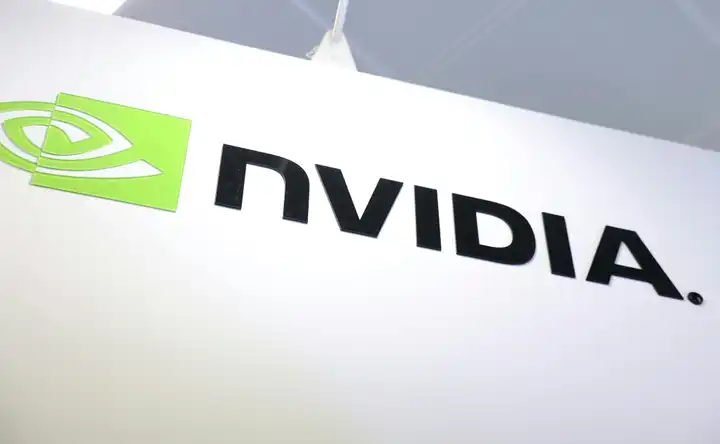In a groundbreaking quarter, NVIDIA has once again solidified its dominance in the semiconductor industry, delivering record-breaking earnings fueled by an insatiable demand for its AI-focused GPUs. As artificial intelligence continues to drive technological innovation across industries, NVIDIA has positioned itself as the go-to provider for the computing power required to run cutting-edge AI applications. This article delves into NVIDIA’s latest earnings report, the factors driving its meteoric growth, and what this means for the future of the company and the tech industry at large.
NVIDIA’s Stellar Earnings Performance
In its most recent earnings report, NVIDIA crushed Wall Street expectations, posting significant revenue and profit gains. Revenue surged to [insert the latest revenue figure], representing a staggering year-over-year growth of [insert percentage]. Meanwhile, earnings per share (EPS) came in at [insert EPS], far exceeding analysts’ projections.
The primary catalyst behind NVIDIA’s exceptional performance is its data center segment, which accounted for the lion’s share of its revenue. Fueled by AI-focused demand, this segment saw unprecedented growth, with hyperscalers, cloud providers, and enterprises racing to adopt NVIDIA’s GPUs to power their AI workloads.
Why AI Chips Are Driving NVIDIA’s Growth
The global AI boom has reached a fever pitch, with technologies like generative AI, large language models (LLMs), and computer vision requiring immense computational resources. NVIDIA’s GPUs, particularly its A100 and H100 models, are considered the gold standard for AI processing. Here are the key drivers behind this surge in demand:
- Generative AI Applications
Tools like ChatGPT, DALL·E, and other generative AI platforms are transforming industries ranging from customer service to content creation. These applications rely heavily on NVIDIA GPUs for both training massive datasets and deploying real-time inference capabilities. - Enterprise AI Adoption
Businesses across sectors like healthcare, finance, retail, and automotive are integrating AI to streamline operations and gain competitive advantages. NVIDIA’s comprehensive AI stack, including its CUDA platform, makes it easier for organizations to adopt and scale AI solutions. - Cloud Computing Expansion
Major cloud providers like Amazon Web Services (AWS), Microsoft Azure, and Google Cloud are investing heavily in AI infrastructure. NVIDIA’s chips are at the core of these platforms, powering both customer-facing AI services and internal operations. - Edge AI and Autonomous Systems
Beyond data centers, NVIDIA’s AI chips are gaining traction in edge applications like autonomous vehicles, robotics, and Internet of Things (IoT) devices. The company’s DRIVE platform is a leader in enabling self-driving technologies, further diversifying its revenue streams.
A Closer Look at NVIDIA’s Product Lineup
NVIDIA’s hardware and software ecosystem is a major reason for its dominance in the AI chip market. Here’s a breakdown of its most critical offerings:
- GPUs: A100 and H100
The A100 GPU has been a cornerstone of AI development, but the newer H100 chip is setting new standards for performance and efficiency. Built on NVIDIA’s Hopper architecture, the H100 offers up to 4x the performance of its predecessor, making it ideal for large-scale AI workloads. - DGX Systems
NVIDIA’s DGX systems provide turnkey solutions for enterprises looking to build AI infrastructure. These systems integrate the company’s GPUs with its software suite, offering unparalleled performance out of the box. - CUDA Platform
NVIDIA’s CUDA software platform is another differentiator. It simplifies the development of AI applications, allowing developers to harness the full power of NVIDIA GPUs without needing to manage low-level hardware complexities. - Networking Solutions
Through its Mellanox acquisition, NVIDIA has bolstered its networking capabilities, providing high-performance interconnects that are crucial for large-scale AI training clusters.
Challenges and Opportunities
Despite its stellar performance, NVIDIA faces some challenges. The semiconductor industry is highly competitive, with rivals like AMD, Intel, and emerging players such as Google’s Tensor Processing Units (TPUs) vying for market share. Additionally, geopolitical tensions and potential regulatory scrutiny could impact NVIDIA’s global operations.
However, the opportunities far outweigh the challenges. As AI adoption continues to grow, NVIDIA is poised to expand its presence in emerging markets, including generative AI, healthcare, and renewable energy. Its commitment to innovation, evidenced by its consistent R&D investments, ensures that it will remain a step ahead of competitors.
Investor Insights: NVIDIA’s Stock Performance
Unsurprisingly, NVIDIA’s stock has soared in response to its earnings report. Year-to-date, NVIDIA shares have [insert stock performance data], reflecting investor confidence in its long-term growth prospects. Analysts are bullish on NVIDIA, with many raising their price targets based on the company’s strong fundamentals and dominant position in the AI chip market.
The Future of NVIDIA and AI
Looking ahead, NVIDIA is well-positioned to continue benefiting from the AI revolution. Here are some trends to watch:
- Generative AI Expansion
The rise of generative AI applications will further drive demand for NVIDIA’s GPUs, as organizations increasingly rely on these technologies to innovate and stay competitive. - AI in Healthcare
From drug discovery to diagnostics, healthcare is set to become a major growth area for AI. NVIDIA’s Clara platform is already making waves in this space, and further adoption could unlock significant revenue potential. - Metaverse Development
As the metaverse evolves, NVIDIA’s Omniverse platform will play a critical role in enabling real-time 3D collaboration and simulation, opening up another lucrative market. - Sustainability and AI
With sustainability becoming a top priority for organizations, NVIDIA’s AI solutions are helping optimize energy usage, reduce waste, and drive innovation in renewable energy.
Conclusion
NVIDIA’s latest earnings report underscores its unmatched ability to capitalize on the AI boom. By providing the hardware and software foundation for AI innovation, NVIDIA has exceeded market expectations and set the stage for sustained growth in the years to come. As artificial intelligence continues to reshape the global economy, NVIDIA is poised to remain at the forefront, delivering value for its customers, investors, and the broader tech ecosystem.
Whether you’re an investor, developer, or tech enthusiast, one thing is clear: NVIDIA isn’t just riding the AI wave—it’s leading it.



